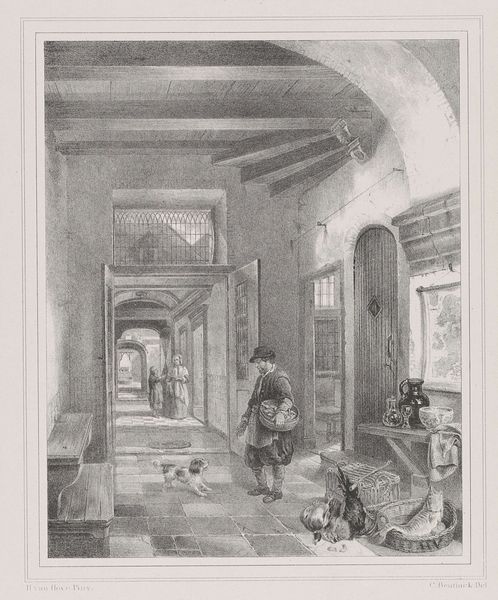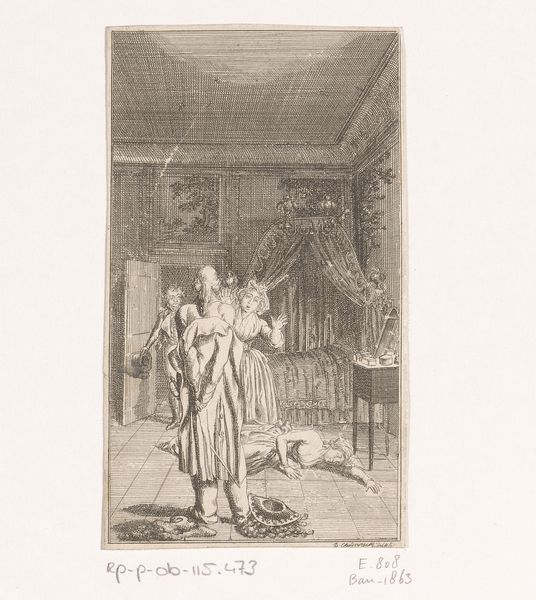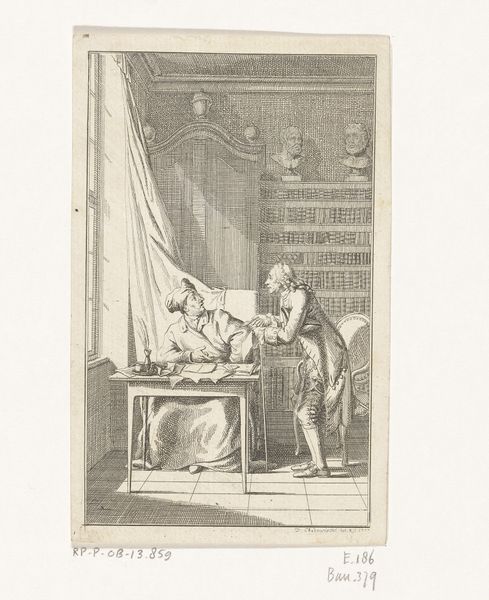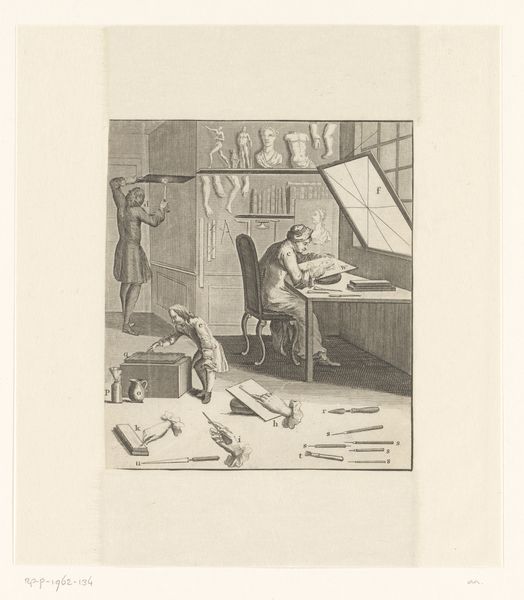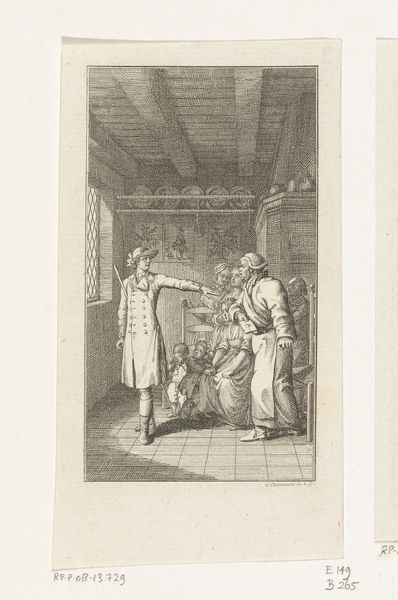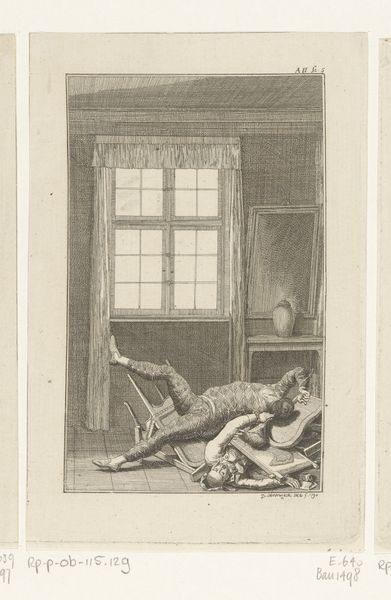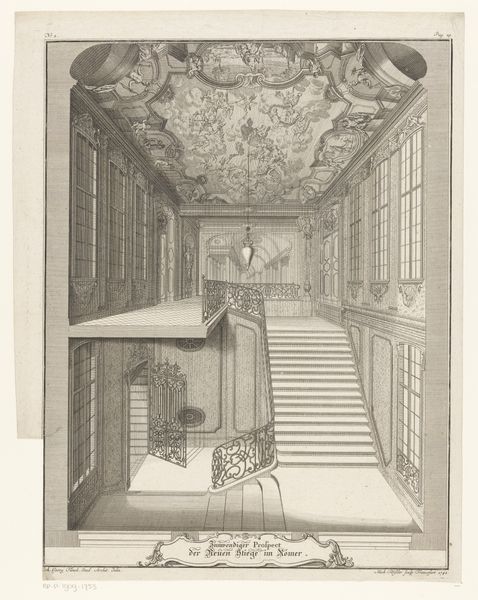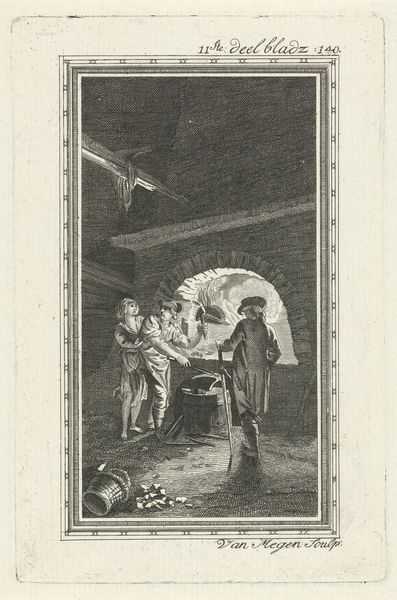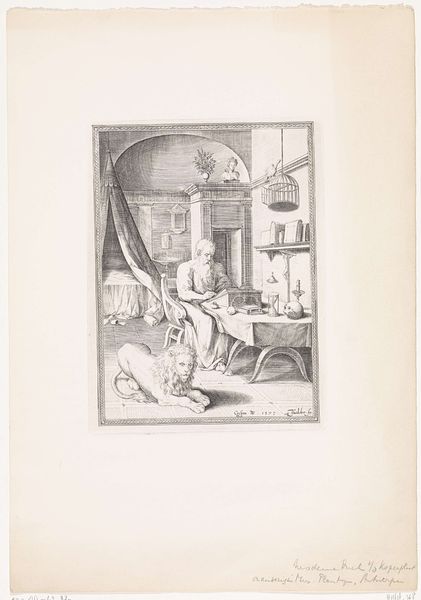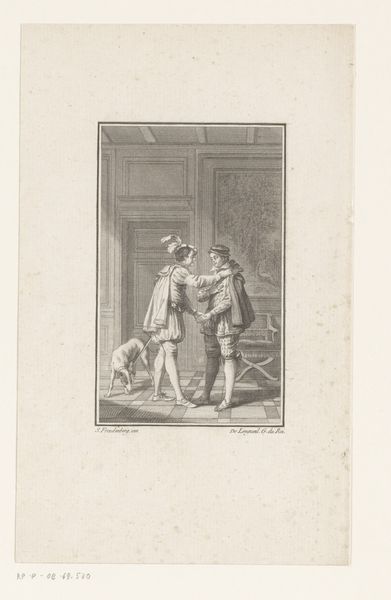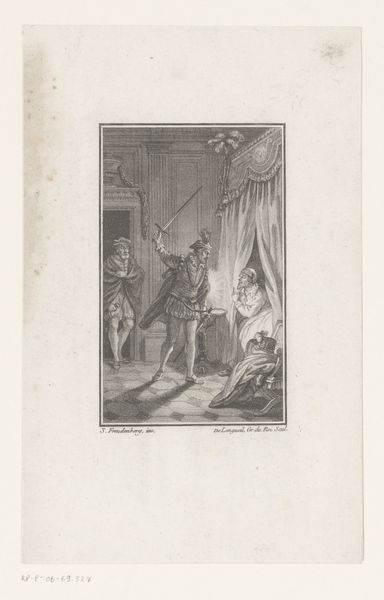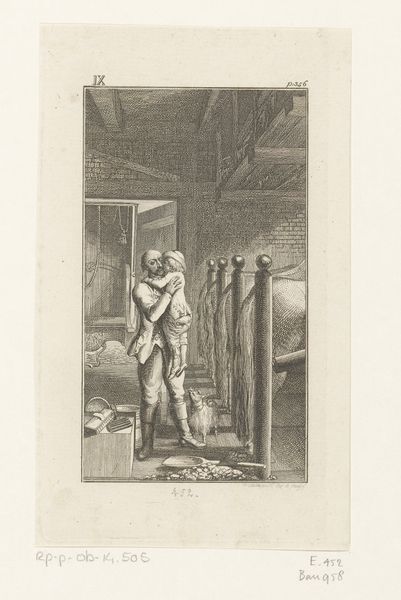
drawing, print, engraving
#
drawing
#
narrative-art
#
baroque
# print
#
dog
#
old engraving style
#
perspective
#
genre-painting
#
engraving
Dimensions: height 141 mm, width 83 mm
Copyright: Rijks Museum: Open Domain
Editor: We are looking at Jacob Folkema’s “Slaapzaal,” created in 1739. It is an engraving, a black and white print. There’s something really striking about how the rows of beds fade into the distance. What do you see in this piece? Curator: The meticulousness of the engraving process immediately catches my eye. Think of the labor involved in creating such detail, the almost mechanical reproduction. This barracks-like room filled with sleeping figures hints at the social context, perhaps depicting a hospital ward or an almshouse. Who occupies these beds, and what are the power dynamics at play? Editor: I hadn’t considered the societal implications like that. Are those dogs in the foreground significant? Curator: Absolutely. Dogs, often symbols of loyalty and servitude, could represent the watchful eye of those in charge. The presence of the animals also subtly blurs the line between the domestic and the institutional. It's a controlled environment, but what humanizing factors persist? Think about the cost of the engraving plate, the time spent to create this image and how that contributed to its value at the time. Editor: So you’re suggesting that the work isn’t just about the scene depicted, but about the materials and production that went into making it, and how they reflect society. Curator: Precisely! Consider how the print medium allowed for wider distribution of such images. This print may have served to comment on or even normalize the living conditions of a particular segment of the population. What do you make of the scale, the physical dimensions of the engraving? Editor: I hadn't thought about that! Smaller prints mean more affordable production costs, therefore more accessible art! Curator: Exactly. By analyzing these factors—materials, labor, intended audience—we gain a richer understanding of the work's meaning within its historical and social context. Editor: This has changed my perception. Thanks! Curator: Indeed. It reveals how seemingly simple depictions can unveil complex narratives about power, labor, and social structures.
Comments
No comments
Be the first to comment and join the conversation on the ultimate creative platform.
